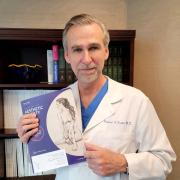Would rippling necessarily have to be corrected?
I had silicone implants 20 years ago. I had them replaced with saline 9 years ago. My mammogram in June was normal. I've lost weight and noticed rippling in mid-August. I'm older and it's ok with me since it's not that unusual. Would it necessarily have to be corrected?
Rippling with saline implants is fairly common but it may contribute to implant "wear and tear" which could result in deflation of the implant. That is also a harmless event but you are entitled to have nice breasts at any age!
Rippling After Breast Surgery - It is not uncommon in patients with thin skin and no breast tissue to have rippling, especially with saline more than silicone implants. It is difficult to correct but, one can do so with fat augmentation and/or use of an ADM (Allo graft derived matrix).
It does not have to be corrected. It is primarily a cosmetic issue and if it doesn't bother you then don't worry about it.
Rippling is more common with saline implants than with silicone gel implants. Patients with little natural breast tissue and those with weight loss may experience more rippling. Unless the cosmetic appearance concerns you, it is not necessary to have it corrected,. It can be improved by changing to a silicone gel implant, fat injections, or with the insertion use of material called acellular dermal matrix (ADM).
I would suggest you find a plastic surgeon certified by the American Board of Plastic Surgery and ideally a member of the American Society for Aesthetic Plastic Surgery (ASAPS) that you trust and are comfortable with. You should discuss your concerns with that surgeon in person.
Robert Singer, MD FACS
La Jolla, California







Rippling is much more common with saline implants, especially when the amount of breast tissue over the implants is thinner. Rippling is not, however, a cause for concern for the implant or health reasons. If the rippling doesn't bother you, I would leave it alone.
In cases where rippling is a problem, there are options. These could include moving the implant to a submuscular location and/or changing to a silicone (gel) implant which has a lower chance of rippling or even the option of possibly having some fat grafting done to the breast(s) to camouflage the rippling.
If you do choose to have something done, seek advice from your local ASAPS members. All ASAPS members are certified by the American Board of Plastic Surgery and have shown a special interest and experience in cosmetic surgery.